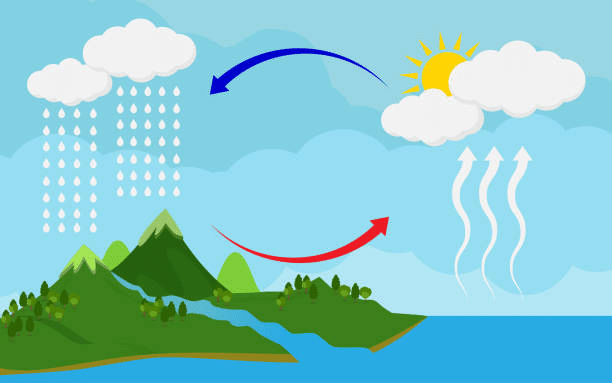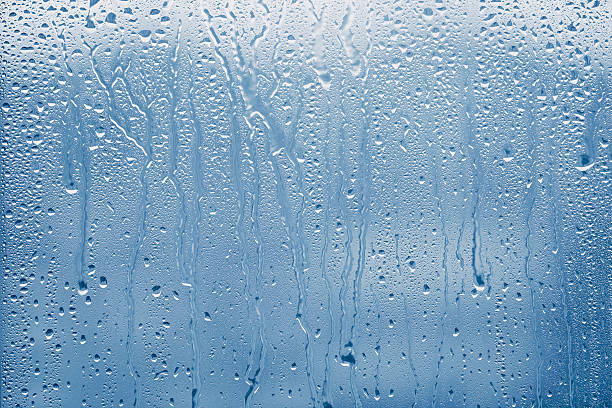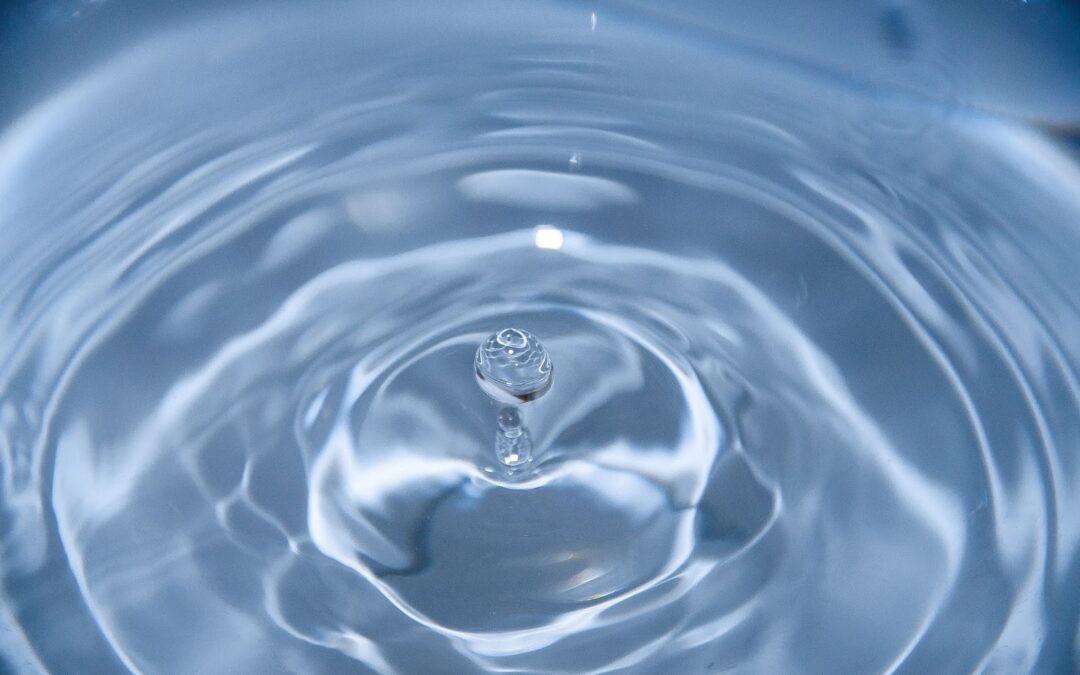The journey of a single raindrop can be more adventurous than one might imagine. As it travels from the sky to the vast rivers and back again, it tells a story of nature’s intricate ballet. In this comprehensive guide, we at CPAPwater embark on a journey to unravel the mysteries of the water cycle, exploring its various stages and profound impact on our environment, ecosystems, and even human civilization.
The Water Cycle Basics

The water cycle describes a fundamental and intricate process that sustains life on Earth by circulating water through various stages. This natural phenomenon ensures that water is constantly recycled and distributed across the planet.
At its core, the water cycle comprises three fundamental components:
- Evaporation
- Condensation
- Precipitation
Additionally, it plays a vital role in maintaining the delicate balance of surface water on our planet.
How Does the Water Cycle Balance Earth’s Water?
The water cycle ensures Earth’s water balance by continuously circulating water through evaporation, condensation, and precipitation. Driven primarily by solar energy, water evaporates from sources like oceans and lakes, rises into the atmosphere, and forms clouds. These clouds release water back to the Earth as precipitation, replenishing freshwater sources. This cycle ensures water’s availability for all living organisms and regulates weather patterns, distributing water across the globe and supporting the planet’s geological processes.
Evaporation: From Surface to Atmosphere
Evaporation is the transformation of liquid water into water vapor as it rises from the land surface or bodies of water to the atmosphere. This phenomenon occurs due to the input of energy from the sun, which causes water molecules at the surface to gain sufficient kinetic energy to break free from their liquid state and become vapor. Essentially, it’s the transition from a liquid to a gaseous state.
Several factors influence the rate of evaporation:
1. Temperature
Higher temperatures provide more energy for water molecules to escape the liquid phase, resulting in increased evaporation rates.
2. Humidity
The moisture content of the surrounding air affects evaporation. Lower humidity levels create a larger gradient for water vapor to move into, encouraging evaporation.
3. Wind
Wind helps remove the saturated air near the evaporating surface, allowing for the continual supply of dry air, which enhances evaporation.
4. Surface Area
A larger surface area of exposed liquid water or moist soil can lead to increased evaporation rates.
5. Solar Radiation
Intense sunlight provides the energy required for evaporation to occur at a faster pace.
6. Water Temperature
The temperature of the water body or soil influences evaporation rates, as warmer water or soil releases water vapor more readily.
Real-life examples:
- Puddles and Lakes: After a rain shower, puddles slowly disappear as the water evaporates into the atmosphere. Similarly, lakes and ponds lose water through evaporation.
- Swimming Pools: The water in swimming pools gradually decreases due to evaporation, especially on hot and sunny days.
- Transpiration: Plants release water vapor into the air through tiny openings in their leaves, contributing to local humidity levels.
- Drying Laundry: Wet clothes dry on a clothesline as the water in them evaporates into the surrounding air.
- Desert Landscapes: In arid regions, water bodies can rapidly evaporate, leaving behind salt deposits.
Significance in the Water Cycle
Evaporation is a critical component of the water cycle because it acts as the primary mechanism for moving water from the Earth’s surface into the atmosphere. This process plays a pivotal role in maintaining the planet’s water balance. As liquid water, including soil moisture and surface runoff, transitions into water vapor, it becomes part of the atmospheric moisture content.
Condensation

Condensation is the transformation of water vapor in the atmosphere back into liquid or ice forms. This happens when air cools enough for water vapor to lose energy and become liquid. This process is vital for creating clouds and dew, influencing our weather.
The amount of moisture in the air, known as humidity, affects condensation. When the humidity reaches 100%, the air can’t hold more moisture, causing water vapor to condense. High humidity means more water vapor is present, making condensation more likely.
Clouds are formed from condensation. As warm, moist air rises and cools, its water vapor turns into tiny droplets or ice crystals. These come together to form clouds. The appearance of clouds depends on factors like temperature, humidity, and atmospheric pressure.
Morning dew is another result of condensation. On cool mornings, the ground loses heat, cooling the nearby air. When this air reaches its dew point, water vapor condenses on surfaces like grass and leaves, creating dew. That’s why we often see dew early in the day.
Precipitation: Raindrops, Snowflakes, and More
Precipitation, the final phase in the water cycle, encompasses a variety of forms, each with its unique characteristics. The main types of precipitation include:
1. Rain
Rain is perhaps the most common form of precipitation. It occurs when water droplets in clouds combine and grow in size, eventually becoming heavy enough to fall to the Earth’s surface. Rain is essential for sustaining a wide range of ecosystems, agriculture, and fresh water sources.
2. Snow
Snow forms when water vapor in the atmosphere crystallizes directly into ice crystals. These ice crystals cluster together to create snowflakes, which can vary in size and shape. Snowfall is common in colder regions and at higher altitudes, contributing to winter landscapes and seasonal water supply.
3. Sleet
Sleet consists of tiny ice pellets that form when raindrops freeze before reaching the ground. This happens in conditions where there is a layer of freezing air near the Earth’s surface. Sleet can create hazardous driving conditions and is less common than rain or snow.
4. Hail
Hail is a type of precipitation characterized by the formation of hard, round pellets of ice. Hailstones can vary in size, with some reaching several inches in diameter. Hail typically forms within severe thunderstorms, where strong updrafts carry raindrops upward into freezing upper-level air.
Factors Determining Precipitation Type
Several factors influence the type of precipitation that falls:
- Temperature: Temperature profiles in the atmosphere determine whether precipitation will be rain, snow, sleet, or hail. Colder temperatures favor the formation of snow and ice.
- Altitude: Precipitation type often changes with altitude. Higher elevations are more likely to experience snowfall, while lower elevations tend to receive rain.
- Air Masses: The characteristics of air masses, including temperature and moisture content, influence precipitation type.
- Freezing Level: The height at which the temperature drops to freezing or below determines whether raindrops freeze and become sleet or snow.
The Human Impact on The Water Cycle
Human activities have had a profound impact on the water cycle, altering its natural dynamics. Several ways in which human actions influence the water cycle include:
Deforestation
The removal of forests for agriculture, urbanization, and logging disrupts the natural cycle of transpiration, reducing the amount of water vapor released into the atmosphere. This can lead to decreased rainfall in affected areas.
Urbanization
The expansion of urban areas often involves the construction of impermeable surfaces like roads and buildings, which increase surface runoff and reduce infiltration. This can lead to increased flooding and reduced groundwater recharge.
Agriculture
Irrigation practices in agriculture divert large quantities of water from natural sources, altering local and regional water cycles. Excessive irrigation can lead to groundwater depletion and soil salinization.
Dams and Reservoirs
The construction of dams and reservoirs can disrupt river systems, altering natural flow patterns and affecting downstream ecosystems. While dams can provide water storage and hydropower, they can also have negative environmental consequences.
Industrial Pollution
Industrial processes release pollutants into water bodies, affecting water quality and the health of aquatic ecosystems. Pollution can disrupt the natural balance of nutrient cycling and harm aquatic life.
Sustainable Water Management Practices
Recognizing the impact of human activities on the water cycle, there is a growing emphasis on sustainable water management practices to mitigate these effects:
- Water Conservation: Implementing water conservation measures in households, agriculture, and industries can reduce water consumption and stress on local water resources.
- Ecosystem Restoration: Restoring natural landscapes, such as wetlands and forests, helps maintain natural water cycling processes, including transpiration and infiltration.
- Efficient Irrigation: Modernizing irrigation techniques can reduce water wastage in agriculture. Drip irrigation and precision agriculture methods optimize water use.
- Urban Planning: Sustainable urban planning involves permeable surfaces, green infrastructure, and efficient storm-water management to reduce surface runoff and enhance infiltration.
- Wastewater Treatment: Treating and reusing wastewater can reduce the demand for freshwater sources, promoting sustainable water use.
Sustainable water management practices, conservation, and international cooperation will play crucial roles in ensuring the continued availability of freshwater resources in a changing climate.
In the end, the global water cycle reminds us that our world is a delicate and interconnected ecosystem, and the choices we make today will shape the availability and quality of water for generations to come. Let us treat each raindrop with the respect it deserves, for it carries the promise of life, renewal, and the enduring beauty of our planet.
For those who rely on CPAP, the right accessories can make all the difference in achieving the rest you deserve. Shop now and elevate your CPAP experience.
Thanks for reading, and see you at the next one!



